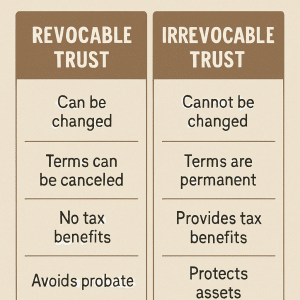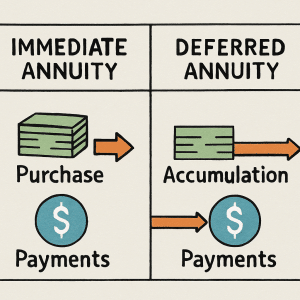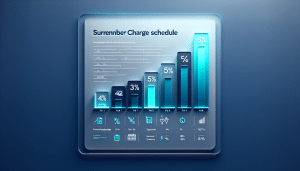What is an Annuitant?
An annuitant is a person who is entitled to receive payments from an annuity contract. The life expectancy of the annuitant is used to calculate the payout schedule, which can be for the rest of their life or a specified period. While the annuitant and the contract owner are often the same person, they can be two different individuals.
If you are thinking about buying an annuity it is important to how the types of annuities work so that you buy the annuity contract that best meets your goals. This guide delineates the differences between owner-driven and annuitant-driven annuity contracts, highlighting which option may be more suitable in specific circumstances.
Owner-Driven vs. Annuitant Driven Annuities
The primary difference between an owner-driven annuity contract and an annuitant-driven annuity contract is an owner-driven annuity terminates upon the death of the owner and the death benefit is paid to the beneficiary.
An annuitant-driven contract pays terminates upon the death of the annuitant and triggers the death benefit which is paid directly to the the beneficiary.
Owner-Driven Annuity Contract
If an annuity is an owner-driven contract it terminates upon the death of the owner and the death benefit is paid directly to the designated beneficiary. If the annuitant dies prior to the owner of an owner-driven contract the owner can decide to become the annuitant or chose to elect a new annuitant.
The original terms of the annuity contract remain the same!
Annuitant-Driven Annuity Contracts
An annuitant-driven contract terminates upon the death of the annuitant. The death benefit then passes down to the designated beneficiary.
If you are the owner of an annuitant-driven contract it is typically a good idea to name yourself as the beneficiary. I have had situations where the annuitant died and the annuity death benefit was paid to the beneficiary thus bypassing the owner altogether.
Annuity Contract: The Parties Involved
There are three parties involved in an annuity contract at a minimum, but there can be up to four when the owner and annuitant are not the same.
Contract Owner. The owner of the annuity contract is the individual who buys/ funds the annuity. As the owner, you are able to change the beneficiary, make withdrawals, surrender the contract, and make any changes to the payout options. An annuity contract owner may be a person or an entity, such as a trust or charity; however, this does vary by insurance company.
The Annuitant: The annuitant is the insured party and must be a live person, an annuitant may not be an entity such as a corporation or trust. Any payments are based on the annuitant’s life expectancy. The annuitant can the owner can be different. Example: The owner is a trust and the trustee is the annuitant.
Beneficiary: The beneficiary of an annuity contract is the person who will receive the annuity’s account value upon the death of the owner.
Life Insurance Company: The life insurance company issues the annuity policy and guarantees the annuity contract.
Joint Ownership
Joint ownership should only be undertaken when absolutely necessary. Remember, the death of the owner rules require that a distribution of the contract occur upon the death of ANY joint owner.
This means at the death of the first joint owner, the contract if not in payout status, must be fully payout within 5 years. Designating a spouse as the joint owner does NOT assure that continuation will be permitted unless care is taken to assure that both joint owners are also designated as joint beneficiaries.
It also is problematic if you have joint owners but designate only one as a beneficiary. If that person happens to die and no contingent or joint beneficiary is named, you could well have a situation in which proceeds will have to be paid to the deceased owner’s estate, or worse, interpleaded if the surviving joint owner asserts entitlement to the death benefit.
Joint ownership should only be undertaken when the parties fully understand the potential ramifications of such an ownership designation and the implications of joint ownership in either a common-law or community property context.¹
What Happens to My Annuity if I Die?
Annuitant-driven contracts: the annuity will pay a death benefit when the annuitant dies.
Owner-driven contracts: pay a death benefit only when the owner of the contract dies. If the annuitant dies, the owner simply designates a new annuitant.
Note: The owner always controls the annuity regardless of either type and the annuitant has no ownership rights of the annuity contract.
Conclusion
When deciding what type of annuity to buy you should always consult your own tax, legal, and or financial professional as well as an annuity expert.
It is critical the parties to your annuity contract be set up appropriately (owner, annuitant, beneficiary). It is also important to know if you want an annuity that is an owner-driven contact or an annuitant-driven contract.













